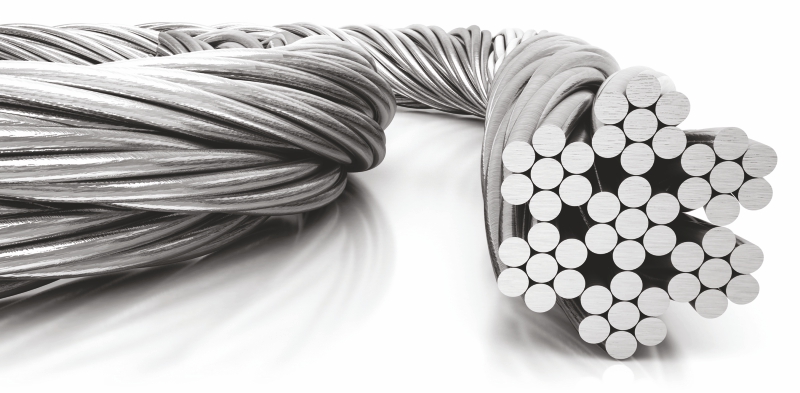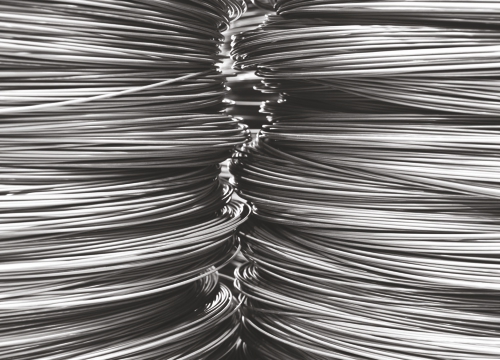
The global steel wire industry is witnessing a stage of speedy recovery and development after the COVID-19 pandemic, as the demand for steel wire has graphed upwards, propelled by multiple factors of rapid urbanization, growth in the infrastructure, industrialization, augment in construction activities, transportation & mobility, automotive, aerospace, energy sectors, as well as technological advancements. The global steel wire industry is expected to showcase a growth opportunity of approximately USD 100 billion at a CAGR 4.7% from 2022-2030, expected to reach USD 180 billion in 2030 from USD 103 billion in 2021, as per reports by Astute Analytica & Grand View Research.
Resurgent Demand in the Indian Steel Wire Industry
The Indian steel industry has entered into a new development stage, post de-regulation, riding high on the resurgent economy and rising demand for steel. Rapid rise in production has resulted in India becoming the 2nd largest producer of crude steel during the last four years (2018-2021), from its 3rd largest status in 2017.
India is one of the key players and leading producers in the steel wire market, owing to a strong domestic market. The growth of the Indian steel wire industry is being driven by multiple factors like rapid urbanization, infrastructure development, industrialization, construction activities, transportation and mobility, need for lightweight materials across automotive and aerospace segments,and growing demand from the energy sector. The construction industry is a major consumer of steel wire products. The increasing demand for infrastructure development in India is driving the growth of the construction industry, in turn driving the demand for steel wire products. Steel wire is also increasingly being used in automotive applications, as automotive manufacturers are increasingly using steel wires in automotive structures and parts owing to their easy processing and characteristics of ductility, high tensile strength, and corrosion resistance. The growing demand for fuel-efficient and lightweight vehicles is driving the use of steel wire in automotive applications. The energy sector has also become one of the thriving sectors in the last few decades, with steel wires being predominantly used in manufacturing transmission lines, steel core wires, overhead power lines, and ground wires for wind power. Growing demand from the energy sector is one of the factors driving the steel wire segment’s market growth.
Additionally, as the steel wire industry continues to evolve constantly, new technologies are being developed to improve the performance and quality of steel wire products. There’s a huge push towards value addition and enhanced quality which matches internationally acceptable quality standards. This enables the manufacture of international quality steel wire and wire products which throws open a wide market nationally and internationally for us. The technological advancements are helping to meet the growing demand for steel wire products in a variety of applications. Thus, demand from these sectors are pushing the growth of the Indian steel wire industry.
Watch: RR Kabel | Solar Cables | Solar Plant | Renewable Energy
Government Initiatives Fostering the Industry
The Indian government has been providing support and nurturing the growth of the steel wire industry through a number of policies. In 2017, the Indian government introduced the National Steel Policy (NSP) aiming to take India’s steel production capacity to 300 million metric tons by 2030, as well as enhancing India’s domestic consumption, producing high-quality steel and making India’s steel sector globally competitive. The NSP 2017 Policy was aimed to boost economic growth through measures such as meeting steel demand domestically through availability of raw materials and capacity additions and in a cost-effective manner.
The Indian government launched another major policy in 2019, called the Steel Scrap Recycling Policy, which provided a framework to facilitate and promote establishment of metal scrapping centers in India for scientific processing and recycling of ferrous scrap generated from various sources. Through this policy the government helped create a conducive ecosystem for the entrepreneurs and investors to establish scrapping centers in the country. This is to recycle and reuse scrap to produce high quality steel. This will ensure more steel production and, thus, reduce dependency on imports.
Under the recent Production Linked Incentive (PLI) scheme for Specialty Steel, launched in 2021, the government aims to promote specialty steel manufacturing in India, through attracting capital investment, generating employment as well as promoting technology up-gradation in the steel sector. With a major five-year financial outlay of INR 6322 crore, the scheme has taken up 67 applications from 30 companies in December 2022. This will attract a committed investment of INR 42,500 crore. The government’s support for the steel wire sector will help the industry to grow and meet the growing demand for steel wire products in India and around the world.
The government has also taken steps to promote ease of doing business, attract foreign investment, establishment of Steel Zones and Clusters, promotion of greenfield investments, and encourage research and development in the steel sector for better quality and cleaner steel production, and trade agreements. The government has also announced a policy for providing preference to domestically manufactured iron and steel products in government procurement. The government is providing incentives to put up steel wire plants in rural and semi-rural areas, providing export incentives for export of high carbon, alloy steel and spring steel wires, as well as reducing power tariffs for industries to make them a viable unit.
Additionally, the government has undertaken infrastructure projects that boost demand for steel wire, such as the development of smart cities, metro rail systems, and rural electrification. These initiatives create a favorable environment for the growth of the steel wire industry and provide opportunities for domestic manufacturers to meet the increasing demand. In addition to this, the government’s emphasis on Make in India and self-reliance has further bolstered the steel wire industry by promoting domestic manufacturing. This has led to a more robust and competitive domestic steel wire market.
Also Read: Global Wires India-Tata Steel Aims to Double Capacity to 1 Million Tons by 2030
Challenges and Redressal
There are several challenges hindering the operational efficiency, innovation, and growth of the Indian steel wire industry today. Major challenges are the lack of technical know-how, lack of modern steel wire plants with latest technology, lack of research and development activities, non availability of skilled manpower and non abidance to the best global practices. The industry also lacks the technical infrastructure that is required for improving quality and productivity, thereby affecting the overall cost effectiveness of the production process.
Other major challenges is the competition from companies from Turkey, Vietnam and South Korea; cheap import of wires from China, Vietnam, Indonesia, Turkey etc., interrupted power supply for steel wire production, dependence on costly coal imports resulting in higher steel prices, frequent change in raw material prices, and logistics and transportation problems.
The industry will have to prepare to provide the best quality products at competitive prices. The price of the steel wires largely gets influenced by the cost of the raw material which are mainly imported. Hence, in order to effectively compete with manufacturing hubs like China and other global players, the Indian steel wire industry may need to procure raw materials at a competitive price.
While the industry has grown at a robust pace over the last three years, it is witnessing a relative slowdown, due to surplus production capacities across the sector. After a period of over three years, the demand for steel wires seems to finally be lower than the available manufacturing capacities and this is resulting in a pressure on the operating margins in the short-term.
These challenges are crucial in nature and need to be addressed to ensure the industry’s competitiveness and sustainable development. With the growth of the Indian economy and the increased focus on manufacturing, India is soon going to be the manufacturing hub of the world and the steel wire industry cannot stay far behind during this phase of growth. To address the surplus capacities manufactured, we will have to find ways to improve our export share in this market. It is crucial for the steel industry to focus on optimizing costs throughout the value chain, including raw material procurement, production processes, and supply chain management. This may involve exploring alternative sourcing options, negotiating favorable pricing contracts, improving operational efficiencies, and adopting cost-effective technologies. Lastly, it becomes important for the government to create a conducive business environment.
Path to Growth
India’s steel industry is currently in a new stage of development, where the market is enjoying rising steel demand from multiple growing industries. As the steel consumption increases following the increase in infrastructure, automobile, energy and technology sectors, the Indian steel wire industry shows major scope for growth. The steel wire industry is an essential cog in the system of the working of a developing nation, and with the support of the various initiatives and policies by the Indian government, the multifold development of the industry will further foster India’s steel industry.
In the longer term, the industry outlook continues to be quite strong and the Indian steel sector should continue at a much faster pace compared to the global steel sector. To stay ahead of the curve, industry stakeholders need to deliver ESG performances at par with global counterparts. Due to the energy intensive nature of the processes, we need to start making a concerted effort towards adopting clean technologies and reducing emission.
Observing the ever-increasing importance of the steel wire industry, Wire & Cable India conducted interviews with major companies, where they shared their contributions to the steel wire industry through their manufacturing operations and product lines as well as their expert insights on the current scenario of the global and Indian steel wire industry, the Indian government’s initiatives for the steel-wire industry’s growth, the challenges faced and how they can be solved.





